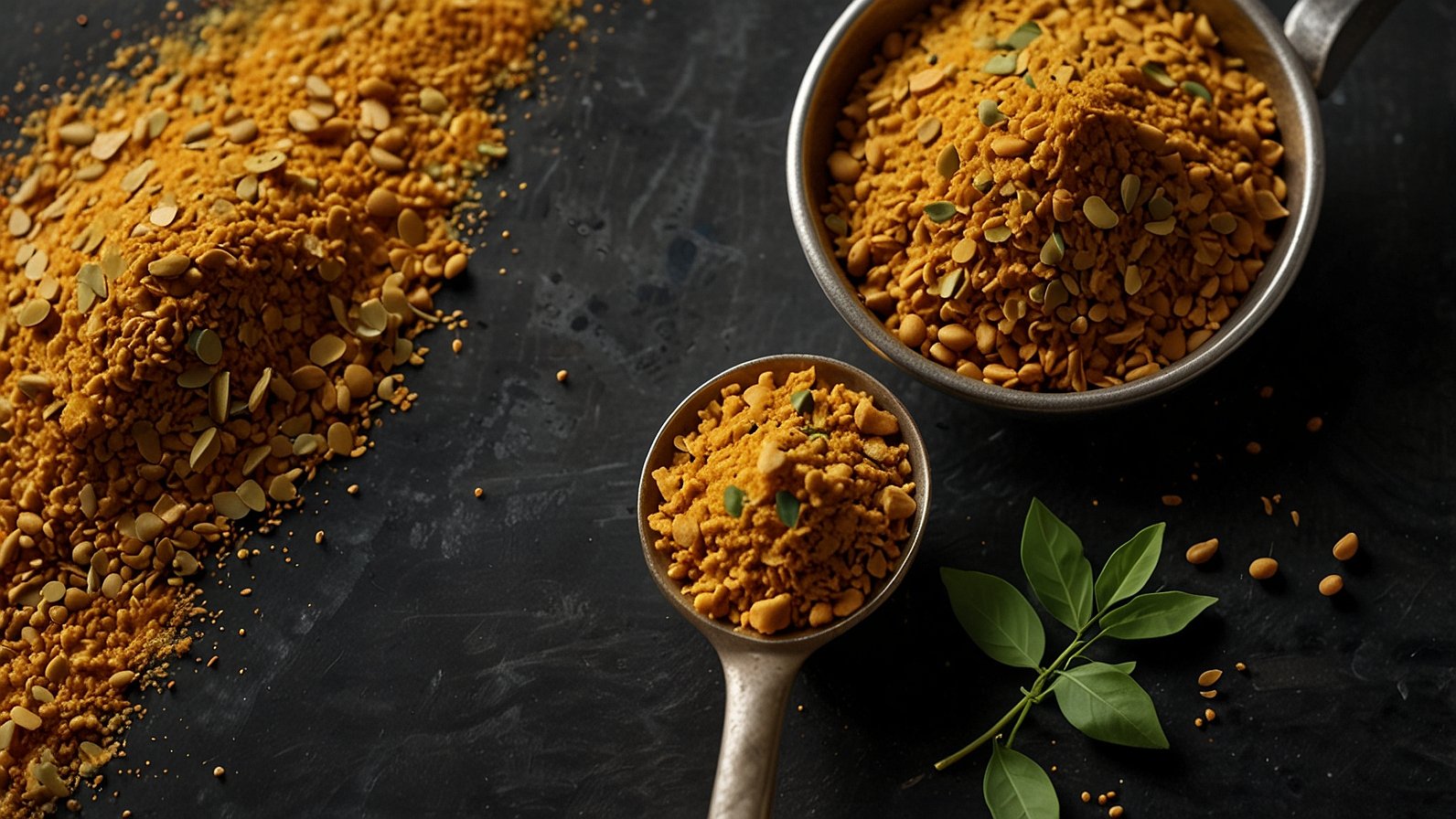Picture this: Golden seeds sizzling in hot ghee, releasing an aroma that’s curiously sweet like maple syrup, yet deeply earthy and savoury. Or imagine vibrant, clover-like leaves adding a fresh, unique bite to a steaming curry. This isn’t some exotic, hard-to-find treasure – it’s foenegriek, better known as fenugreek, a humble powerhouse that’s been elevating dishes and supporting well-being for millennia, from Mediterranean shores to bustling South Asian kitchens. What if this everyday spice sitting in your cupboard (or easily found at the market) held more potential than you ever imagined?
Foenegriek isn’t just flavour; it’s history, health, and home cooking magic, all in one tiny seed or leaf. Let’s unravel its story.
Foenegriek: A Culinary Journey Across Continents
Forget bland health food! Foenegriek is a flavour chameleon, essential in countless beloved dishes:
- The Seed Powerhouse: Toasted lightly to mellow bitterness and enhance nuttiness, or ground into fragrant powders.
- Indian Soul: The backbone of sambar powder, panch phoron (Bengali five-spice), and countless curries and dals. Its unique depth is irreplaceable.
- Middle Eastern Magic: Key in Egyptian helba (fenugreek seed paste tea, often sweetened) and Yemeni hulba. Adds complexity to spice blends like berbere (Ethiopia/Eritrea).
- Global Touch: Found in Persian ghormeh sabzi, Turkish pastirma (cured beef), and even some European pickling brines and imitation maple syrups (thanks to that distinctive aroma!).
- The Fresh Leaf (Methi): Tender greens with a slightly bitter, aromatic punch.
- Vegetable Star: Sautéed with potatoes (aloo methi), stirred into dals (methi dal), or used in flatbreads (methi paratha) across India and Pakistan.
- Herbal Freshness: Adds a unique layer to salads (use sparingly!) or as a finishing herb in stews in Middle Eastern and North African cooking.
Think of foenegriek seeds like tiny flavour bombs: Earthy, slightly bitter, with hints of celery and caramel. The magic happens when heat transforms them. The leaves? Like a more assertive cousin of spinach or watercress, bringing a fresh, green bitterness that balances rich dishes perfectly.
Foenegriek’s Time-Tested Wellness Wisdom
Beyond the plate, foenegriek boasts a remarkable resume in traditional herbal practices. Modern science is starting to explore these ancient uses, particularly:
- Digestive Harmony: For centuries, cultures have turned to fenugreek seeds after a heavy meal. It’s believed to soothe the stomach and support healthy digestion. Think of it as a gentle, warming nudge for your gut. A simple tea made from lightly crushed seeds is a classic remedy.
- Lactation Support (The Famous One!): This is perhaps foenegriek’s most well-known traditional use. Generations of mothers, particularly in South Asia and the Middle East, have consumed fenugreek seeds (as tea, incorporated into foods like laddoos, or supplements) believing it helps support healthy breast milk production. Important Note: While traditional use is strong and many lactation consultants acknowledge its popularity, always consult your doctor or a qualified lactation specialist before using any herb for this purpose. Individual results can vary.
- Nutrient Nudge: Don’t underestimate this little seed! Foenegriek packs fibre, iron, magnesium, manganese, and a unique soluble fibre called galactomannan. It’s a nutrient-dense way to add complexity to your food.
Myth Buster Alert! While foenegriek is incredible, it’s not a magic bullet. It won’t single-handedly “cure” major ailments. Its strength lies in being a supportive, traditional part of a holistic approach to well-being, especially for digestion and lactation support (under guidance). Think of it as a helpful friend in your wellness toolkit, not a replacement for professional medical advice.
Bringing Foenegriek Magic into Your Kitchen & Life
Ready to harness the power of foenegriek? Here’s how to start simply:
| Foenegriek Form | Culinary Uses | Wellness/Traditional Uses | Tips & Notes |
|---|---|---|---|
| Seeds (Whole) | Tempering, pickling, spice blends, toasted garnish | Digestive tea, lactation support | Toast lightly before grinding or using whole to reduce bitterness |
| Seeds (Ground) | Curries, stews, breads, spice rubs | Easier consumption in foods | Buy whole seeds and grind as needed for best flavor |
| Fresh Leaves (Methi) | Sautéed dishes, curries, flatbreads, salads | Nutrient-rich vegetable | Use like spinach; blanching reduces bitterness |
| Dried Leaves (Kasuri Methi) | Finishing spice for curries, soups, marinades | Concentrated flavor | Crush between palms before adding; store airtight |
Simple Visual Idea: Imagine a split infographic – one side shows seeds transforming from raw to toasted in a pan, the other shows fresh leaves wilting into a fragrant curry. Caption: “Foenegriek’s Journey: From Seed to Savoury, Leaf to Luscious.”
Growing Your Own? It’s surprisingly easy! Fenugreek is a fast-growing, cool-weather crop perfect for pots or garden beds. You’ll have fresh methi leaves in weeks. The seeds are the same as those sold for cooking/sprounting.
Foenegriek: A Tiny Seed with Timeless Appeal
From the aromatic depths of a simmering curry to the comforting warmth of a traditional tea, foenegriek proves that some of the most powerful things come in small packages. It’s a bridge between the delight of flavourful cooking and the wisdom of age-old herbal traditions.
Your 3 Foenegriek Adventures Start Tomorrow:
- Toast & Taste: Lightly toast 1 tsp fenugreek seeds in a dry pan until fragrant (about 1-2 mins). Crush slightly and smell that amazing aroma! Add to your next lentil soup or roasted veggies.
- Fresh Touch: Find fresh methi leaves (check Indian/Asian grocers or farmers markets). Sauté them with garlic, a pinch of salt, and a squeeze of lemon for a simple, healthy side dish.
- Sip & See: Simmer 1 tsp lightly crushed fenugreek seeds in 1.5 cups water for 5-10 mins. Strain, add a touch of honey or lemon if desired, and enjoy as a warming digestive tea after dinner.
So, what’s your experience? Have you cooked with foenegriek before, or sipped it as tea? Does its maple-like scent surprise you? Share your fenugreek stories in the comments below!
You May Also Read: Stay Informed: Your Guide to wheon.com Health News
FAQs
What does foenegriek / fenugreek taste like?
Seeds: Earthy, slightly bitter, nutty when toasted, with a distinctive maple/celery-like aroma. Fresh leaves (methi): Bitter, herbal, similar to spinach but more pungent. Dried leaves: Intensely aromatic, slightly bitter, used as a finishing herb.
Is fenugreek the same as methi?
Yes! “Fenugreek” usually refers to the seeds or the plant. “Methi” (Hindi/Urdu) specifically refers to the fresh or dried leaves of the fenugreek plant.
How do I use fenugreek seeds in cooking?
Toast whole seeds lightly to reduce bitterness and enhance flavour before adding to tempering (tadka), spice blends, curries, pickles, or bread dough. Ground seeds are used in spice mixes.
Does fenugreek really help with milk supply?
Fenugreek has a long history of traditional use for lactation support. Many women and lactation consultants report positive experiences. However, scientific evidence is mixed, and it’s crucial to consult with a doctor or lactation consultant before using it, as it may not be suitable for everyone (e.g., with certain health conditions or diabetes).
Can I grow fenugreek at home?
Absolutely! It’s fast-growing and easy. Plant seeds (the same ones sold for cooking) in pots or soil. Harvest the fresh leaves (methi) in about 3-4 weeks. It prefers cooler weather.
Are there any side effects of fenugreek?
Consumed in normal culinary amounts, it’s generally safe for most. Larger medicinal doses or supplements can cause digestive upset (gas, diarrhea) in some. The maple-like scent can transfer to sweat/urine. Pregnant women (especially early pregnancy) and people with diabetes, peanut allergies, or on blood-thinning medication should consult a doctor before using significantly beyond culinary amounts.
Where can I buy fenugreek?
Find whole seeds and ground powder in the spice aisle of most supermarkets (often labelled “Fenugreek”). Find fresh methi leaves and dried kasuri methi in Indian, Middle Eastern, or international grocery stores. Seeds are also common in health food stores.










